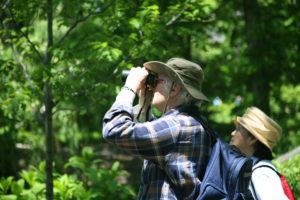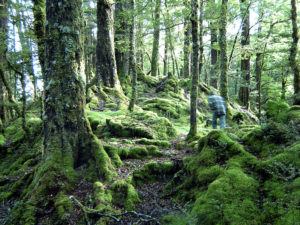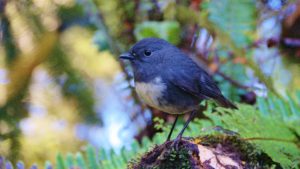Environmental monitoring is more than just a modern conservation buzzword. It’s an essential tool in determining whether all those volunteer hours put in by your community group is achieving positive, measurable change.
Positive change is not just dead rats, dead possums and a truckload of weeds removed. Was the removal of those predators and pest plants enough to increase native biodiversity? Is the birdlife now thriving? Or were those dead rats just a fraction of the local rat population, with trap-wary survivors now breeding rapidly and continuing to wreak havoc?

Environmental monitoring helps tell you what’s working, what effect you’ve had – and perhaps whether there is more you may need to do. So what kinds of environmental monitoring do community-based groups do in New Zealand? What are some of the ways you can monitor the impact of your work and what are the advantages and limitations of the commonly used monitoring techniques?
Over one-half of groups reported using photo points and 5-Minute Bird Counts (5MBC), with 35% able to quantify their restoration project objectives through management outcome monitoring (for example, they used 5-Minute Bird Counts in association with predator control). Ecosystem monitoring toolkits specifically designed for community users were used by less than 20% of groups surveyed.
The study found that “groups managing larger areas (e.g. >8 ha), with medium to high partner support and working on Department of Conservation (DOC) or private land were more likely to be conducting their own monitoring”.
The key problems which limited the ability of a group to start a monitoring programme were funding (45%), people (45%) and technical skills (31%). The number of active members in a group and the average age of members were not found to significantly affect whether that group carried out monitoring. It was project area which had the strongest influence on whether monitoring was carried out.
The researchers concluded that: “significant gains in CBEM (Community Based Environmental Monitoring) could be made by targeting support towards groups managing small areas. The significant positive effect of partner support and constraints imposed by resourcing and technical skills on monitoring activity show that government agencies and science professionals could play a critical role in growing CBEM. Prioritising these collaborative partnerships to design and implement monitoring programmes will maximise the value of monitoring, by meeting groups’ and potentially partners’ information needs.”

The full report can be freely downloaded: The current state of community-based environmental monitoring in New Zealand (2016)
Okay – your group is about to begin a major (or minor) community restoration project, you’re convinced of the benefits of environmental monitoring – but what exactly is involved and how do different monitoring techniques compare? An earlier research project carried out by DOC scientists and also published in the New Zealand Journal of Ecology, compared three different monitoring techniques to estimate the population of a known South Island robin population over a 5-year period. Since the population was already known, the accuracy of the three techniques, when applied to robins, could be assessed.
Robins – as many nature-lovers know – are rather friendly and inquisitive little birds. Results from this research showed that the robins’ friendliness and tendency to check out stationary observers can lead to inaccuracy in some population estimation methods. One of the recommendations from this research was that, when counting robins (using the 5-Minute Bird Count method for example), that they are counted from line transects rather than points. One estimation method that did provide accurate results for the researchers was the mark-resight population estimation technique.
The full research report is freely available: Three population estimation methods compared for a known South Island robin population in Fiordland, New Zealand (2012)
Keen to learn more about the 5-Minute Bird Count (5MBC)? Lynette Hartley from DOC’s Christchurch office reviews the use of this monitoring technique in New Zealand in an article published in 2012.

According to Hartley, the 5MBC method was developed by New Zealand’s Department of Scientific and Industrial Research (DSIR) in the early 1970s and used for monitoring forest birds. Forty years later there is now a large resource of over 200,000 counts (as at 2012) – providing a valuable historical baseline measure of multi-species bird populations in New Zealand forests. It was 5MBC data, Hartley says, that “played a role in persuading the government to cease all logging of native forests on public land in New Zealand in 2002.”
On reviewing and assessing this wealth of data, Hartley comments that “a number of features of the method that should be considered when designing a study including that:
(1) it is an index not a census method;
(2) observer, species behaviour, weather and season can all affect the number of birds detected;
(3) counts are habitat- species- and probably year- specific preventing inter-species comparisons, and comparisons of species numbers at different sites if the counts were undertaken in different years.”
Although Hartley believes the method is suitable for investigating long term trends, she warns that “there is likely to be considerable annual variability and a pilot study should be undertaken to investigate the number of counts needed to detect the difference of interest (i.e. power).”
The full review is published in the New Zealand Journal of Ecology and is freely available: Five-minute bird counts in New Zealand (2012)
DOC’s website also has extensive resources relating to the 5-Minute Bird Count method.

